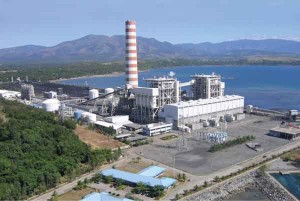 DESPITE THE SECOND HIGHEST GDP growth rate in Asia and a huge consumer base of 100 million Filipinos, the Philippines attracts the least Foreign Direct Investments in the ASEAN.
DESPITE THE SECOND HIGHEST GDP growth rate in Asia and a huge consumer base of 100 million Filipinos, the Philippines attracts the least Foreign Direct Investments in the ASEAN.
This is tragic because investments create jobs and creates purchasing power.
One of the main turn-offs for investors is high power cost. At US 25 cents/KWH (kilowatt hour), it was rated among the Top ten most expensive in the world compared to 44 other countries in 2012. Thailand is half of that cost and Indonesia only one-fifth of that cost.
Let us recall that 25% of industrial cost of production is power. And the average per capita of Filipinos is only US$2,600 a year (roughly P110,000 a year) . That high power cost, therefore, penalizes both industrial and common folk users.
Our research revealed that only the Philippines (among ASEAN nations) do not subsidize electricity  rates. That is a balancing act of government that favors  government fiscal health at the expense of job generation through investments and  the  social cost due to the  inability of the poor to hack high electric bills.Â
It is a policy that needs review when a new president steps in in July.
Independent forecasts place demand growth for power at 5.7% from 2015-2020. With the projected 1,000 new Megawatt power added yearly, there will still be a  power source gap of 5.5% on the average for the same years.
The New Government must address both the high cost and the sufficiency of power.
 Total installed capacity is as follows (per region) :Luzon (13,213 MW or 73%), Visayas ( 2,520 MW or 14%) and Mindanao (2,160 MW or 12.3%). As of 2014, RP had total power strength of 19,379 MW.
Total installed capacity is as follows (per region) :Luzon (13,213 MW or 73%), Visayas ( 2,520 MW or 14%) and Mindanao (2,160 MW or 12.3%). As of 2014, RP had total power strength of 19,379 MW.
According to power sources, the country depends on the following: Coal (29%), Oil (23%), Hydro (18%), Natural Gas ( 14%), Geothermal (10%), Waste Heat (4%) and Other renewables (2%)
Those considered other ” Renewables” are: (solar,wind, biomass)
The Visayas is dependent on the following sources: Geothermal (915MW), Coal (806), Oil (670), Hydro (11), Biomass (44), Solar (13) and Natural gas (1) or total of close to 2,500MW.
Because of the Chernobyll nuclear fall out in Russia  and the damaged nuclear plant after the Japan tsunami ,  RP seems to have closed its door to nuclear sources of power. We may note that despite the risks of tragedy Japan still maintains 10 large nuclear power plants .
Bohol with over 100 MW power force is dependent largely on: (70%) geothermal sourced from Leyte, Hydro ( three falls) and diesel oil (city).
Bohol has always said no to Coal proposals for its environmental damage to a largely tourist and agricultural province. We have no geothermal assets (that’s why we had to link to Leyte) and the Biomass (jatropha et all ) has not yet taken off the ground. We are too far away from the Malampaya to make use of the natural gas there.
There are currently proposals pending with the provincial leadership, namely, hydroelectric, solar and wind- all “Renewables”. Â As Power Generation is such a complex undertaking, we can only lend our ears to the experts. One of them is Cielito Habito, former NEDA chief, economist and professor at the Ateneo University. He says:
Coal is the cheapest but the most environmentally damaging ( there are 10 pending coal projects in the pipeline). Geothermal is a complex way of generating power and the up front investment is expensive and therefore lower rates of return to investor.
Quotes further Habito (Phil Daily Inquirer April 12 Column “No Free Lunch”): Solar and wind sources are more expensive, site specific and  not unsuitable for base load power because of unstable capacity. The FID (Feed-in-trade) for solar projects was P9.68/KWh, Wind at  P8.53/KWh and biomass at P6.63/KWh which are well above the current generation rate of (geo)thermal and natural as plants at only P5/KWh. Increasing the share of these three will bring the cost of electricity up.”
“Areas for good wind power are limited.”, says Habito and that in cloudy days, solar source cannot generate power and will have to store them in batteries making it  an expensive process.
“They may be good for for fulfilling peak load requirements  when base load is not enough , but they cannot always be relied upon.”, he concludes.
Power, therefore, is a powerful adjunct that shape or mis-shape a country’s economic profile.
Any move to expand the current power capacities need the best calculated judgment- feeling the impact it will have on industry and the poor consuming public. Â But we need to address this NOW.
For comments: email to dejarescobingo@yahoo.com or bohol-rd@mozcom.com
